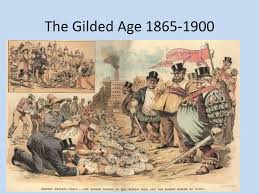
Life in the Gilded Age, 1865-1900
INSTRUCTIONAL OBJECTIVES
After reading this chapter, students should be able to do the following:
1.Analyze the development of urban America and discuss the challenges faced by city dwellers and how they dealt with these obstacles.
2. Explain why immigrants were attracted to the United States in the late nineteenth and early twentieth centuries. Discuss what these newcomers found when they arrived and whether or not they assimilated successfully.
3. Explain the term New South and what it meant to the residents of the South.
4. Explain how American labor sought to improve its working and living conditions in the late nineteenth century and identify major instances of labor protest.
5. Explain the meaning of Social Darwinism and the Gospel of Wealth.
CHAPTER SUMMARY
In the Gilded Age, as industrialization transformed the economy, immigration and urbanization challenged many established social patterns. As rural Americans and European immigrants sought better lives in the cities, urban America changed dramatically. New technologies in construction, transportation, and communication produced a new urban geography with residential neighborhoods defined by economic status. Urban growth brought a new urban middle class.
Education underwent far-reaching changes. Socially defined gender roles began to change as some women chose professional careers and took active roles in reform. Some men responded by redefining masculinity through organizations and athletics. Urbanization offered new choices to gay men and lesbians by making possible the development of distinctive urban subcultures.
The South shared in some of the changes of the Gilded Age, but lagged in others, notably education. The myths of the Old South and the Lost Cause obscured for some southerners the real source of their difficulties. Changes in state laws disfranchised black voters and other new laws legalized and extended racial segregation.
Many Europeans immigrated to the United States because of economic and political conditions in their homelands and their expectations of better opportunities in America. Immigrants often formed distinct communities, frequently centered on a church. The flood of immigrants spawned nativist reactions among some old-stock Americans. The West included immigrants from Asia, American Indians, and Latino peoples in substantial numbers. White westerners used politics and sometimes violence to exclude and segregate Asian immigrants. Federal policy toward American Indians proceeded from the expectation that they could and should be rapidly assimilated, but such policies largely failed. Latinos—descendants of those living in the Southwest before it became part of the United States and those who came later from Mexico or elsewhere in Latin America—often found their lives and culture under challenge.
© 2015 Cengage Learning. All Rights Reserved. May not be scanned, copied or duplicated, or posted to a publicly accessible website, in whole or in part.
CHAPTER 16
The Nation Industralizes, 1865-1900
INSTRUCTIONAL OBJECTIVES
After reading this chapter, students should be able to do the following:
- Identify the factors that led to rapid economic growth and industrial expansion after the Civil War.
- Analyze the constraints that faced railroad developers and explain how the choices they made consequently influenced other enterprises.
- Discuss the expectations that led to federal policymakers’ choices regarding American Indians after the Civil War and the ways in which western Indians chose to respond.
- Explain how choices regarding railroads, mining, agribusiness, finance, capitalism, and water promoted the development of the West.
- Evaluate the constraints faced by Indians, Mexican Americans, Chinese immigrants, and African Americans between 1850 and 1900 and the choices that each made.
CHAPTER SUMMARY
After 1865, large-scale manufacturing developed quickly in the United States, built on a foundation of abundant natural resources, a pool of skilled workers, expanding harvests, and favorable government policies. The outcome was the transformation of the U.S. economy.
Entrepreneurs improved and extended railway lines, creating a national transportation network. Manufacturers and merchants now began to think in terms of a national market for raw materials and finished goods. Railroads were the first businesses to grapple with the many problems related to size, and they made choices that other businesses imitated. Investment bankers, notably J. P. Morgan, led in combining separate rail companies into larger and more profitable systems. Steel was the crucial building material for much of industrial America, and Andrew Carnegie revolutionized the steel industry. He became one of the best known of many entrepreneurs who developed manufacturing operations of unprecedented size and complexity.
What Carnegie did in steel, John D. Rockefeller did in oil. Others followed their lead, producing oligopoly and vertical integration in many industries. Technology and advertising emerged as important competitive devices. One important result was the introduction of both a wide range of new consumer goods and new ways for consumers to purchase. Some southerners promoted the creation of a New South through industrialization and a more diversified agricultural base. The outcome was mixed—the South did acquire significant industry, but the region’s poverty was little reduced.
Federal policymakers hoped for the rapid development of the West and often used the public domain to accomplish that purpose. Native Americans, especially those of the Great Plains, seemed to pose an obstacle to industrial development, but most were defeated by the army and relegated to reservations. Throughout the West, railroad construction overcame the vast distances, making possible cattle raising on the western Great Plains, farming in the central part of the nation,
© 2015 Cengage Learning. All Rights Reserved. May not be scanned, copied or duplicated, or posted to a publicly accessible website
We can write this or a similar paper for you! Simply fill the order form!




